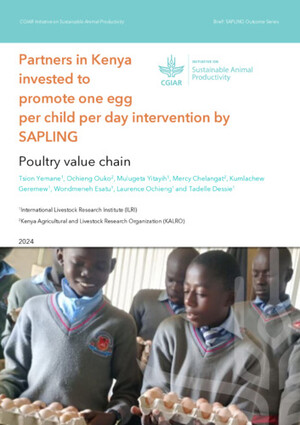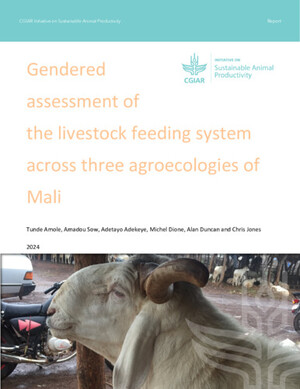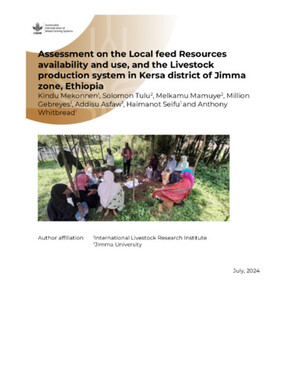
Effect of intercropping cereal crops with forage legumes and source of nutrients on cereal grain yield and fodder dry matter yields
Abstract
The study investigated the effect of intercropping cereals (maize, sorghum and wheat) with forage legumes (lablab and clover), planting methods and manure application on cereal grain and fodder dry matter yield and fodder nutritive value. Data collected over a period of three years, indicated that intercropping significantly (P<0.001) yielded more fodder (27%) but slightly depressed grain yields compared to sole cereal cropping. Row planting significantly (P<0.001) yielded more fodder DM (5%) and more cereal grain (21 %) than broadcast planting. The nutritive value (CP, NDF and dry matter degradability) of the fodder was not affected (P>_0.05) by planting method. However, intercropping forage legumes with cereals generally resulted in fodder with higher fodder CP concentration, lower NDF and higher dry matter degradability than fodder from sole cereals. Manure application into cereal + forage legume cropping systems significantly (P<0.05) yielded higher grain and fodder DM (range: 2.9-3.6 t ha-' and 8.2-9.3 t ha-', respectively) than inorganic fertiliser (3.2 and 8.8 t ha''). These yields were significantly (P<0.001) higher than the of no manure and no diammonium phosphate (DAP) urea fertiliser control, which yielded 2.3 and 7.1 t ha-'of grain and fodder DM, respectively. Fodder DM yield gains of manure over control in sole crops averaged 46.9% for maize, 41.4% for sorghum and 64.2% for wheat, while yield gains in the intercrop averaged 34.5% for maize + lablab, 39.1 % for sorghum + lablab and 37.1 % for wheat + clover. Cereal grain yield gains caused by manure over the control in sole crops averaged 58.3% for maize, 22.7% for sorghum and 28.6% for wheat, while yield gains for the intercrops averaged 70.4% for maize + lablab, 55.6% for sorghum + lablab and 14.3% for wheat + clover. Cattle manure application yielded as much or even more grain and fodder as chemical fertiliser (DAP/urea). For optimum cereal grain yield and fodder production from cereal\and forage legume cropping systems, cattle manure should be applied at a rate of 13.7 t DM ha-'. However, the rate of 2.5 t DM manure ha-' year ha', which had a yield advantage of 15.5% over the control in sole stands, was recommended for tropical smallholder crop/livestock farming systems.
Citation
African Crop Science Journal;10(1): 81-97









